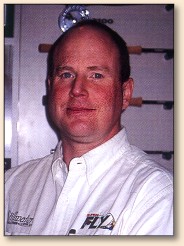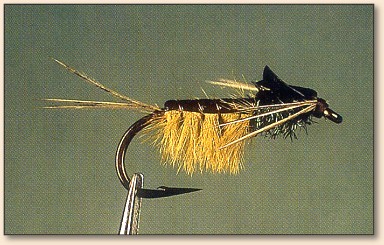Phil Rowley and the Herl May
By Art Lingren, B.C., Canada
 At the age of six, Phil Rowley was introduced to coarse fishing in
England and has been hooked ever since. For the past 20 years
Phil Rowley has been fly-fishing Stillwaters almost exclusively.
His love of stillwater fly-fishing has taken him all over
British Columbia and Washington in the pursuit of trout and
char. A former commercial fly tier, Phil has written for almost
every major fly-fishing publication in North America. His
contributions also include books and numerous feature articles
on fly-fishing Stillwaters and stillwater fly patterns.
At the age of six, Phil Rowley was introduced to coarse fishing in
England and has been hooked ever since. For the past 20 years
Phil Rowley has been fly-fishing Stillwaters almost exclusively.
His love of stillwater fly-fishing has taken him all over
British Columbia and Washington in the pursuit of trout and
char. A former commercial fly tier, Phil has written for almost
every major fly-fishing publication in North America. His
contributions also include books and numerous feature articles
on fly-fishing Stillwaters and stillwater fly patterns.
Phil's book Fly Patterns For Stillwaters has
become a best seller. When he is not tying flies or on the
water, Phil travels western North America performing
at outdoor shows, teaching a variety of seminars, speaking to
fly clubs and conducting weekend fly-fishing schools. Phil's
website, www.flycraftangling.com is dedicated to fly-fishing and
fly-tying education.
Following is one of Phil's flies, the Herl May.

Recipe - Herl May
Adaped by Philip Rowley
Hook: Size 12 - 14, Mustad R72.
Thread: 8/0 Gudebrod, brown or olive.
Body: Light olive ostrich herl.
Rib: Fine copper wire.
Shellback: Mottled turkey quill or Brown Midge Back,
Stretch Flex or Scud Back.
Thorax: Peacock herl.
Legs: Micro Fleck Turkey Glats.
Wingcase: Mottled turkey quill or Brown Midge Back,
Stretch Flex or Scud Back.
Intended use: Wet fly; Callibaetis nymph
imitation for rainbow trout in clear-water lakes.
Comments: The mayfly reigns supreme on rivers and
streams but the same cannot be said for stillwaters as
the species diversity just isn't there. In the West,
Callibaetis is the species of record and
all stillwater fly-fishers should have an acute awareness
of this species. Favoring the clear marl and chara lakes
of the south-central plateau of British Columbia,
Callibaetis feature prominently. Lakes
such as White, Lac Le Jeune and Lac Des Roches dictate
demure subtle patterns to be successful. It was with
this challenge in mind that I adapted the Hurl May.
Callibaetis nymphs are active swimmers
and immediately prior to the hatch their activity level
peaks, darting above the weed tops prior to emergence.
During this false hatch period numerous trout cruise
the shoals, searching for an easy meal. Callibaetis
move through the water column propelled by rapid
undulations of their body followed by prolonged pauses
in a distinct arched position, abdominal gills fluttering.
Using Micro Fleck Turkey Flat fibers for the tail and legs,
I was able to duplicate the posture of both the active and
resting nymphs. The ostrich herl body suggested the abdominal
gills and, in a lighter coloration, blended with the shellback
and wingcase to represent the light bellies and dark backs
common to many aquatic invertebrates. When
Callibaetis nymphs are on the menu the Herl
May on the end of a long 15-foot leader and floating-line
or Wet Tip Clear line is a proven combination. Present the
pattern along the marl and chara seams. Using the chara to
mask their presence, trout dart over the lighter marl,
pouncing on countless Callibaetis nymphs. ~ PR
Credits: The Herl May is one of hundreds of flies from the
new book Contemporary Fly Patterns of British Columbia by
Art Lingren, published by Frank Amato Publications. Art's previous book,
Fly Patterns of British Columbia has been featured here
before.
Our Man In Canada Archives
|

